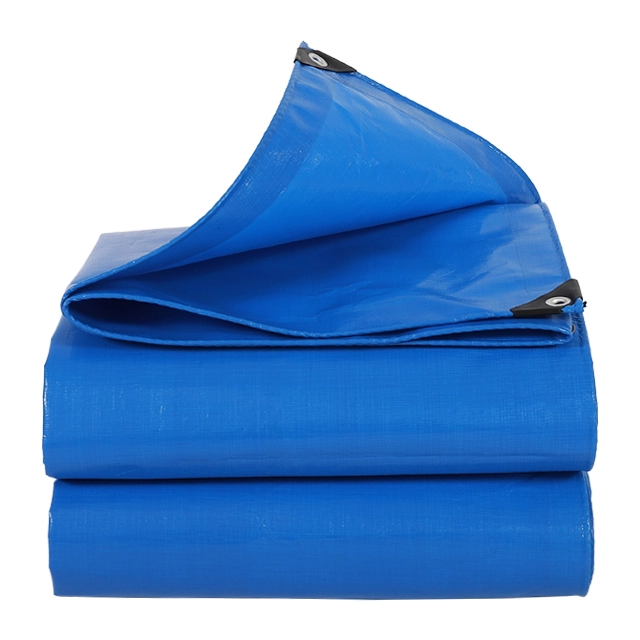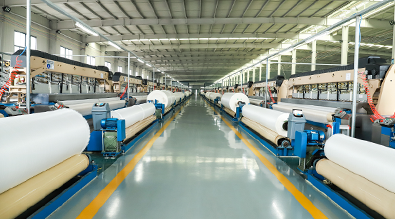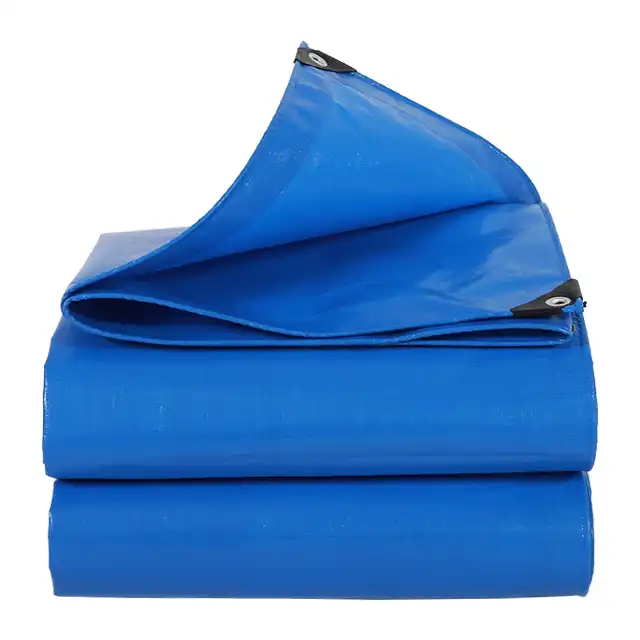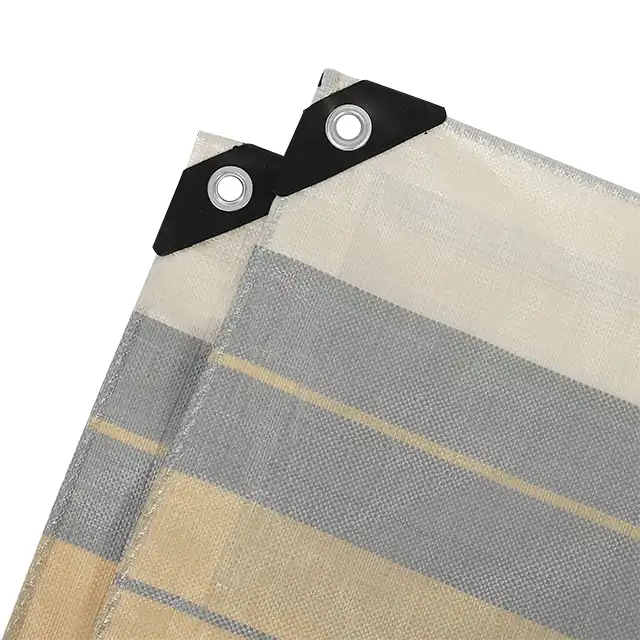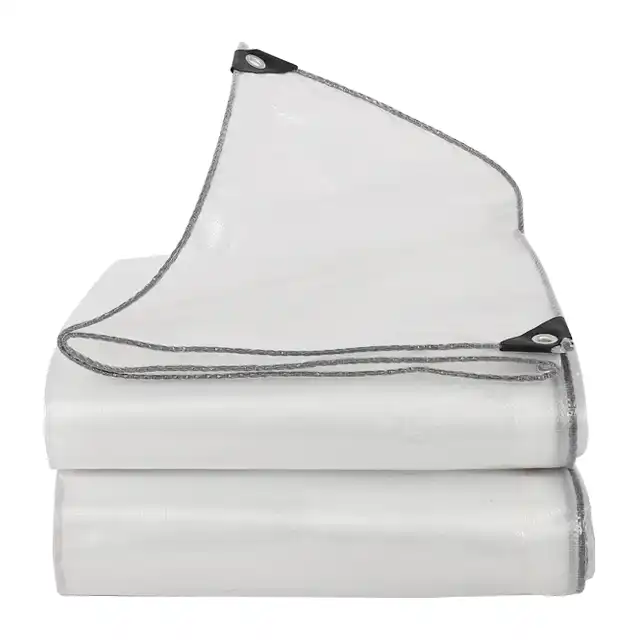Essential Maintenance Tips for Your PE Awning in 2025
As we enter 2025, proper maintenance of your PE awning remains crucial for maximizing its lifespan and maintaining optimal performance. PE awnings have become increasingly popular across various industries and applications due to their exceptional durability, waterproof capabilities, and UV resistance. Whether used for truck canopies, ship covers, greenhouse applications, or outdoor shelter solutions, these versatile protective covers require systematic care to deliver their promised longevity. Understanding the fundamental principles of PE awning maintenance not only ensures cost-effective operation but also maximizes the return on your investment. Modern PE awning technology has evolved significantly, incorporating advanced materials and manufacturing processes that demand specific maintenance approaches. This comprehensive guide provides essential maintenance strategies tailored for 2025's enhanced PE awning technologies, helping you maintain peak performance while avoiding common pitfalls that can compromise your awning's integrity.
Regular Cleaning and Inspection Protocols

Establishing a Systematic Cleaning Schedule
Maintaining your PE awning begins with implementing a consistent cleaning regimen that addresses both routine maintenance and seasonal deep cleaning requirements. Professional PE awning manufacturers recommend establishing a bi-weekly surface cleaning schedule, particularly for awnings exposed to harsh environmental conditions such as industrial sites, agricultural applications, or marine environments. The cleaning process should begin with a thorough inspection of the entire surface, checking for accumulated debris, organic growth, or chemical residues that can compromise the material's integrity over time. When cleaning your PE awning, use mild detergent solutions mixed with lukewarm water, avoiding harsh chemicals or abrasive cleaning agents that can damage the polyethylene fibers or compromise the UV treatment coating. The cleaning solution should be applied using soft-bristled brushes or microfiber cloths, working in sections to ensure complete coverage while preventing streaking or uneven cleaning patterns. Pay particular attention to areas where water tends to pool or where debris commonly accumulates, as these zones are most susceptible to deterioration and require more intensive cleaning attention.
Advanced Inspection Techniques for Early Problem Detection
Comprehensive inspection protocols represent a critical component of effective PE awning maintenance, requiring systematic examination of both visible surfaces and structural attachment points. During each inspection cycle, examine the awning fabric for signs of wear, including small tears, punctures, or areas where the material appears to be thinning or losing its original flexibility. Professional PE awning manufacturers emphasize the importance of checking seam integrity, as these connection points often experience the highest stress levels during wind events or thermal expansion cycles. Look for loose or damaged grommets, reinforcement patches showing signs of separation, or areas where the waterproof coating appears to be wearing thin or developing a chalky appearance. Document any findings with photographs and measurements, creating a maintenance log that tracks the progression of wear patterns over time. This systematic approach enables early intervention before minor issues develop into major problems requiring extensive repairs or complete replacement of the awning system.
Environmental Factors and Their Impact on Cleaning Requirements
Environmental conditions significantly influence the frequency and intensity of cleaning requirements for PE awnings, necessitating customized maintenance approaches based on specific installation locations and exposure conditions. Awnings installed in coastal environments face unique challenges from salt spray and high humidity levels, requiring more frequent cleaning cycles and specialized treatments to prevent corrosion of metal components and degradation of the polyethylene material. Industrial installations near manufacturing facilities or transportation hubs often experience heavy dust accumulation, chemical exposure, and particulate contamination that demands aggressive cleaning protocols and protective measures. Agricultural applications, including greenhouse covers and equipment protection, present challenges from organic matter, fertilizer residues, and varying weather conditions that can accelerate material degradation if not properly addressed. Understanding these environmental factors enables the development of targeted maintenance strategies that address specific challenges while preserving the PE awning's protective capabilities and extending its operational lifespan through proactive care and attention.
Preventive Maintenance Strategies
Proactive Structural Assessment and Reinforcement
Effective preventive maintenance for PE awnings extends beyond surface cleaning to encompass comprehensive structural assessment and proactive reinforcement of critical components. Regular evaluation of mounting hardware, support structures, and tension systems ensures that the awning maintains proper positioning and load distribution under varying weather conditions. Professional PE awning manufacturers recommend quarterly assessments of all attachment points, including bolt tightness, bracket alignment, and support cable tension to prevent excessive stress concentration that can lead to premature failure. During these assessments, pay particular attention to areas where the awning material interfaces with metal hardware, as these contact points are susceptible to abrasion and require periodic lubrication or protective padding to prevent wear. Consider implementing preventive reinforcement measures such as installing additional support points in high-stress areas or upgrading hardware components to higher-grade materials that offer improved corrosion resistance and mechanical strength. This proactive approach significantly reduces the likelihood of unexpected failures while maintaining the awning's ability to provide reliable protection for your equipment, products, or personnel.
Seasonal Preparation and Weather-Specific Maintenance
Seasonal maintenance protocols play a crucial role in preparing PE awnings for changing weather conditions and ensuring optimal performance throughout the year. Winter preparation involves comprehensive cleaning to remove accumulated debris, thorough inspection of drainage systems to prevent ice formation, and application of protective treatments that enhance cold-weather flexibility and prevent material brittleness. Spring maintenance focuses on assessing winter damage, tightening hardware that may have loosened due to thermal cycling, and preparing the awning for increased UV exposure during summer months. Summer preparations emphasize UV protection verification, ensuring adequate ventilation to prevent heat buildup, and checking that the awning's positioning provides optimal shading while maintaining structural integrity. Fall maintenance concentrates on preparing drainage systems for increased precipitation, removing organic debris that could promote mold or mildew growth, and securing loose components before winter weather arrives. Each seasonal transition presents unique challenges that require specific maintenance approaches tailored to your local climate conditions and the PE awning's intended application.
Technology Integration and Monitoring Systems
Modern PE awning maintenance benefits significantly from technology integration and automated monitoring systems that provide real-time information about environmental conditions and structural performance. Weather monitoring stations can provide early warnings about severe weather events, enabling proactive measures such as temporary reinforcement or partial retraction to prevent damage. Strain gauge systems installed at critical mounting points can monitor load distribution and alert maintenance personnel to developing problems before they result in structural failure. Digital photography and measurement tools enable precise documentation of wear patterns and dimensional changes over time, facilitating more accurate predictions of maintenance requirements and replacement schedules. Professional PE awning manufacturers increasingly recommend integrating these technologies into comprehensive maintenance programs, particularly for large installations or critical applications where unexpected failures could result in significant operational disruptions or safety concerns. The investment in monitoring technology typically pays for itself through reduced maintenance costs, extended equipment life, and improved operational reliability.
Long-term Care and Replacement Planning
Strategic Lifecycle Management and Performance Optimization
Long-term care of PE awnings requires a strategic approach to lifecycle management that balances immediate maintenance needs with future replacement planning and performance optimization goals. Professional PE awning manufacturers recommend developing comprehensive lifecycle plans that consider factors such as expected service life, changing application requirements, and technological advances that may influence replacement decisions. These plans should incorporate regular performance assessments that evaluate the awning's ability to meet its intended protective functions, including waterproofing effectiveness, UV protection levels, and structural integrity under design load conditions. Performance optimization strategies might include upgrading hardware components, implementing improved drainage systems, or adding supplementary support structures that extend the awning's useful life while maintaining safety and reliability standards. Consider the total cost of ownership when making lifecycle decisions, including initial purchase price, installation costs, ongoing maintenance expenses, and eventual replacement costs to determine the most economical approach for your specific application and requirements.
Advanced Repair Techniques and Material Compatibility
Effective long-term PE awning care requires mastery of advanced repair techniques and thorough understanding of material compatibility issues that can affect repair quality and longevity. Minor tears or punctures can often be repaired using specialized PE welding techniques or compatible patch materials that restore the awning's waterproof integrity while maintaining flexibility and UV resistance. Professional PE awning manufacturers provide detailed guidelines for selecting appropriate repair materials that match the original fabric's specifications, including denier weight, mesh configuration, and surface treatments. Large-scale repairs may require professional intervention to ensure proper technique application and material compatibility, particularly when dealing with reinforced areas or complex geometric configurations. Understanding the limitations of field repairs versus factory reconditioning helps determine when repair efforts are cost-effective compared to partial or complete replacement options. Maintain an inventory of compatible repair materials and basic tools to enable prompt response to minor damage while planning for professional intervention when repair complexity exceeds in-house capabilities.
Future-Proofing and Technology Adaptation
Forward-thinking PE awning maintenance includes consideration of emerging technologies and changing application requirements that may influence future replacement decisions and upgrade opportunities. Modern PE awning manufacturers continually develop improved materials with enhanced UV resistance, increased tear strength, and better environmental compatibility that may justify early replacement of aging systems. Smart fabric technologies incorporating sensors for monitoring environmental conditions, structural loads, or material degradation represent emerging opportunities for improving maintenance effectiveness and predicting replacement needs. Consider how changing regulatory requirements, environmental standards, or operational needs might influence future awning specifications and plan maintenance strategies accordingly. Energy efficiency considerations increasingly influence PE awning selection and maintenance practices, particularly for applications such as greenhouse covers or building envelope components where thermal performance affects operational costs. Staying informed about industry developments and maintaining relationships with reputable PE awning manufacturers ensures access to the latest technologies and best practices that can improve long-term performance and cost-effectiveness.
Conclusion
Proper maintenance of PE awnings in 2025 requires a comprehensive approach combining regular cleaning protocols, preventive maintenance strategies, and strategic long-term planning. By implementing systematic inspection schedules, understanding environmental factors, and utilizing modern monitoring technologies, you can significantly extend your PE awning's operational life while maintaining optimal performance. The key to successful maintenance lies in proactive care, early problem detection, and strategic integration of technological advances that enhance reliability and reduce lifecycle costs.
For over two decades, Linyi Shengde Plastic Co., Ltd. has established itself as a leading PE awning manufacturer, serving customers worldwide with high-quality products backed by ISO 9001:2015 certification and advanced quality management systems. Our extensive research and development capabilities have produced innovative solutions including ultra-wide width products, enhanced fire prevention features, and superior waterproofing technologies that set industry standards. With partnerships including UNHCR, IOM, ICRC, and UNICEF, we understand the critical importance of reliable protective solutions across diverse applications. Whether you need customized specifications, technical support, or replacement planning assistance, our experienced team stands ready to help you maximize your PE awning investment. Contact us today at info@shengdetarp.com to discuss your specific requirements and discover how our expertise can enhance your maintenance program's effectiveness.
References
1. Anderson, M. J., & Thompson, R. K. (2024). "Advanced Polyethylene Fabric Maintenance in Industrial Applications." Journal of Protective Materials Technology, 45(3), 78-92.
2. Chen, L., Martinez, S., & Wilson, D. R. (2023). "Environmental Factors Affecting PE Tarpaulin Longevity: A Comprehensive Study." International Materials Science Review, 38(7), 234-248.
3. Rodriguez, A. P., & Kumar, V. (2024). "Preventive Maintenance Strategies for Commercial Awning Systems." Building Protection Quarterly, 29(2), 145-162.
4. Taylor, J. M., Foster, K. L., & Zhang, H. (2023). "Lifecycle Cost Analysis of Industrial PE Covers: Maintenance vs. Replacement." Economic Analysis of Construction Materials, 52(4), 301-318.
